 Thursday 13 September 2018 2:48pm
Thursday 13 September 2018 2:48pm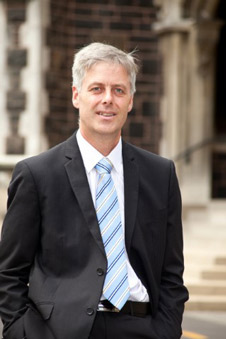
Professor Richard Blaikie
University of Otago research leader Professor Richard Blaikie has received almost $1 million in Government funding to develop a cost-effective solution for large-scale production of hydrogen gas, a potential source of energy as an alternative to fossil fuel.
Professor Blaikie, who is the University's Deputy Vice-Chancellor, Research, is one of five Otago researchers successful in securing almost $5 million between them from the Government's Endeavour Fund, New Zealand's largest and most prestigious research and science contestable fund.
One of Professor Blaikie's research areas focuses on a form of nanotechnology where light is controlled at scales much smaller than its wavelength. His project will use this to enhance water-splitting efficiency to help produce cost-effective energy fuels.
For some time, the scientific community has been actively seeking alternatives to burning fossil fuels, the main source globally of greenhouse gas emissions from human activity. Professor Blaikie explains hydrogen is a promising option because it burns clean, has abundant reserves and is high energy-density by weight. Hydrogen is also an important chemical for fertiliser, semiconductor and chemical industries.
However, production of hydrogen is currently dominated by a process of steam-reforming of natural gas which produces significant greenhouse gas emissions. Water splitting offers a clean pathway to hydrogen production, but this is currently significantly more expensive, Professor Blaikie says.
“This research will significantly reduce the hydrogen production cost, having significant value as the world seeks out clean energy to replace fossil fuels and clean industrial hydrogen.”
Professor Blaikie, who is an investigator in the Dodd-Walls Centre for Photonic and Quantum Technologies, a national centre for research excellence hosted by the University of Otago, will receive $999,959 for his project over three years.
The other successful research teams are led by Drs Lynette Brownfield and Andrew Cridge, from the Department of Biochemistry and Drs Sam Lowrey and Harald Schwefel, from the Department of Physics.
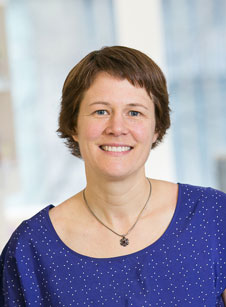
Dr Lynette Brownfield, Department of Biochemistry
Male-fertile female kiwifruit
$999,720
3 years
Kiwifruit differs from most crop plants as it has separate male and female plants. This means that pollen must be transferred from a male to a female plant for fertilisation and subsequent fruit development. As a result, more than 10 per cent of the plants in current kiwifruit orchards are non-fruiting males required for pollen production. Additionally, as the size of fruit depends on a high rate of pollination, kiwifruit growers spend resources on managing bees (kiwifruit flowers are not attractive to bees), and some growers resort to artificial pollination.
Interestingly, flowers on female kiwifruit plants initiate pollen development, but the pollen aborts before maturity. A team led by Dr Brownfield and involving scientists at Plant and Food Research Ltd aim to understand what causes this pollen abortion. This knowledge could provide tools to restore male fertility in female kiwifruit plants. Having females that can also produce pollen in orchards means the male plants could be removed and growers would no longer need to manage bees and pollination. This would reduce costs, increase yields and improve land-use efficiency.
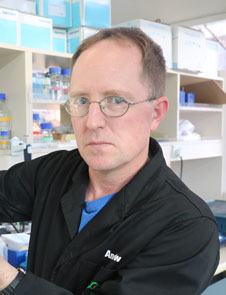
Dr Andrew Cridge, Department of Biochemistry
Bees as Biosecurity Biomonitors
$964,620
3 years
New Zealand's world-class biosecurity system aims to protect the environment, primary production and human health from harmful invasive organisms. Biosecurity implemented through comprehensive surveillance, eradication and management programmes costs $248 million annually. Recent invasions of the velvetleaf plant and myrtle rust highlight that once pest species enter New Zealand, they are tough to contain and require significant resources to eradicate or manage. The success of eradication is exponentially improved by early detection of new invaders, and in turn, enhanced by proficient monitoring. However, monitoring remains poor for weed species with reliance on fortuitous observation or border interceptions.
The Otago research will make novel use of honey bees as biosecurity monitors, to detect and locate the presence of noxious plant species in New Zealand. The researchers will deliver an efficient and cost effective end-to-end surveillance, diagnostic and discovery system by combining the foraging behaviour of bees, with cutting edge DNA technology to identify plant species from bee-collected pollen, and remote-data modelling to locate the invasive plant.
This landscape-scale approach to monitor for noxious plants will be trailed in both rural and urban areas, including high-risk sites for exotic weed invasions.
This surveillance system will provide a new component in the biosecurity toolbox to better support government and Māori aspirations to protect our unique environments and primary industries. The science is also anticipated to underpin additional biosecurity issues by using pollen to monitor for exotic plant diseases, and infering the geographic origin of high-risk insect pests detected by border security.
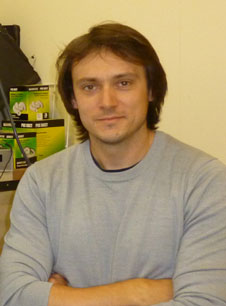
Dr Sam Lowrey, Department of Physics
Superhydrophobic lenses – wetting gradients for anti-icing
$999,676.98
3 years
Icing constrains many engineering systems, from aircraft to domestic appliances. It is a particularly major problem in energy generation and conversion systems such as wind-turbine blades and heat exchangers, leading to system damage and reduced availability and efficiency.
Anti-icing coatings can be applied, demonstrating ice-formation delays of 3-5-fold on heat exchangers or wind-turbines; however, these are a temporary measure. Removing condensed liquid remains an unsolved technical challenge for hydrophobic anti-icing coatings.
This project will demonstrate new classes of surfaces that prevent ice-formation even under extreme conditions. These novel surfaces will be trialled under real-world conditions of high airflow-rates and condensation-icing typical of heat exchanger and wind turbine operation to demonstrate fast and continuous surface rejuvenation.
Dr Lowrey's team will test their new systems with NZ heat exchanger, wind turbine manufacturers and the metal and composite-fibre industry.
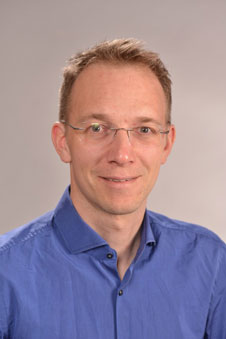
Dr Harald Schwefel, Department of Physics
Dodd-Walls Centre for Photonic and Quantum Technologies
Quantum microwave-optical conversion
$999,519
3 years
The goal of this project is to develop the technologies needed to efficiently, coherently and reversibly convert individual microwave photons into individual optical photons.
The motivation for this work is communicating and performing calculations using inherently quantum mechanical states, so called quantum simulators or quantum computers. There has been spectacular progress towards this end using devices based on superconducting quantum-bits (qubits). Superconducting qubits are small resonant circuits made of superconductor. One of their key advantages is that they are manufactured in a similar way to today's computer chips with the same benefits of robustness and ease of manufacture at reasonable cost. One of the downsides is that they have to be cooled to only a fraction of a degree above absolute zero. These extreme operating temperatures mean that it is very hard to send quantum signals to and from the quantum computer and currently there are no technologies that work. This lack of a quantum interface means superconducting qubit computers cannot be connected together to form quantum network. Severely limiting their application to super-secure quantum cryptography and to powerful distributed quantum computation.
In this project, they will improve the efficiency of the conversion of microwave photons to a state where true quantum states can be transferred.
For further information, contact:
Professor Richard Blaikie
Deputy Vice-Chancellor, Research
Tel 03 479 8513
Email richard.blaikie@otago.ac.nz
Dr Lynette Brownfield
Department of Biochemistry
Tel 03 479 5151
Email lynette.brownfield@otago.ac.nz
Dr Andrew Cridge
Department of Biochemistry
Email andrew.cridge@otago.ac.nz
Dr Sam Lowrey
Department of Physics
Tel 03 479 7784
Email sam.lowrey@otago.ac.nz
Dr Harald Schwefel,
Department of Physics
Email harald.schwefel@otago.ac.nz
Liane Topham-Kindley
Senior Communications Adviser
Tel 03 479 9065
Mob 021 279 9065
Email liane.topham-kindley@otago.ac.nz
Electronic addresses (including email accounts, instant messaging services, or telephone accounts) published on this page are for the sole purpose of contact with the individuals concerned, in their capacity as officers, employees or students of the University of Otago, or their respective organisation. Publication of any such electronic address is not to be taken as consent to receive unsolicited commercial electronic messages by the address holder.
FIND an Otago Expert
Use our Media Expertise Database to find an Otago researcher for media comment.
